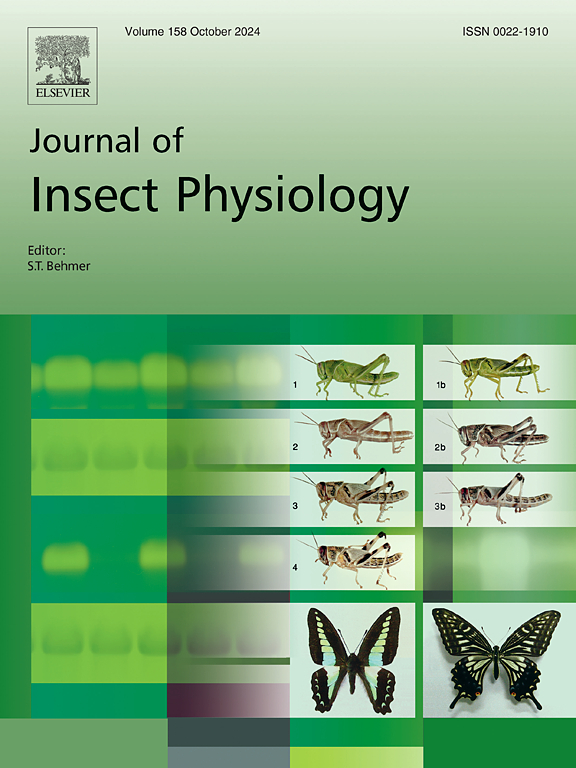新热带螽斯的孤雌生殖
IF 2.3
2区 农林科学
Q1 ENTOMOLOGY
引用次数: 0
摘要
孤雌生殖是昆虫中广泛存在的一种生殖策略,在进化生物学领域具有重要意义。尽管如此,在蝈蝈儿中孤雌生殖的发生率仍然很低。我们在墨西哥韦拉克鲁斯州的Los Tuxtlas的发现表明,一小部分雌性Conocephalus ictus是斑秃单性遗传的,这是热带孤雌生殖的第一次报道。与预期相反,孤雌生殖似乎并不适合于雌纹瓢虫。没有翅膀的孤雌雌性比有翅膀的同类数量多,而且体型更大。此外,与有性生殖的雌性相比,孤雌生殖的雌性卵的数量、孵化成功率和后代成年率都较低。孤雌生殖的地理分布与冰川期的冰雪覆盖地区有关,墨西哥的地形地貌表明,在间冰期,C. ictus孤雌生殖的进化与孤雌生殖的有翼雌性有效分散和殖民新环境的能力之间存在潜在的联系。鉴于其分布,icictus为理解气候因素对热带孤雌生殖生物进化轨迹的影响提供了有价值的模型。进一步研究ictus及其对过去气候变化的响应,有助于深入了解孤雌生殖在进化生物学中的适应意义。本文章由计算机程序翻译,如有差异,请以英文原文为准。

Parthenogenesis in the neotropical katydid Conocephalus ictus
Parthenogenesis is a widespread reproductive strategy in insects with significant implications in the field of evolutionary biology. Nonetheless, the incidence of parthenogenesis in katydids remains low. Our findings in Los Tuxtlas, Veracruz, Mexico indicate that small proportion of females of Conocephalus ictus are tychoparthenogenetical, marking the first report of a tropical parthenogenetic katydid. Contrary to expectation, parthenogenesis does not appear adaptive for C. ictus females. Wingless parthenogenetic females outnumber their winged counterparts and exhibit larger size. In addition, parthenogenetic females have lower clutch size, hatching success, and offspring reaching adulthood compared to sexual females. The geographical distribution of parthenogenesis has been linked to ice-covered areas during glaciation periods, and the orography of Mexico suggests a potential link between the evolution of parthenogenesis in C. ictus and the ability to disperse effectively and colonize new environments of the parthenogenetic winged females during interglacial periods. Given its distribution, C. ictus offers a valuable model for understanding the impact of climatic factors on the evolutionary trajectory of parthenogenetic organisms in the tropics. Further research on C. ictus and its response to past climatic shifts can provide insights into the adaptive significance of parthenogenesis in evolutionary biology.
求助全文
通过发布文献求助,成功后即可免费获取论文全文。
去求助
来源期刊

Journal of insect physiology
生物-昆虫学
CiteScore
4.50
自引率
4.50%
发文量
77
审稿时长
57 days
期刊介绍:
All aspects of insect physiology are published in this journal which will also accept papers on the physiology of other arthropods, if the referees consider the work to be of general interest. The coverage includes endocrinology (in relation to moulting, reproduction and metabolism), pheromones, neurobiology (cellular, integrative and developmental), physiological pharmacology, nutrition (food selection, digestion and absorption), homeostasis, excretion, reproduction and behaviour. Papers covering functional genomics and molecular approaches to physiological problems will also be included. Communications on structure and applied entomology can be published if the subject matter has an explicit bearing on the physiology of arthropods. Review articles and novel method papers are also welcomed.
 求助内容:
求助内容: 应助结果提醒方式:
应助结果提醒方式:


